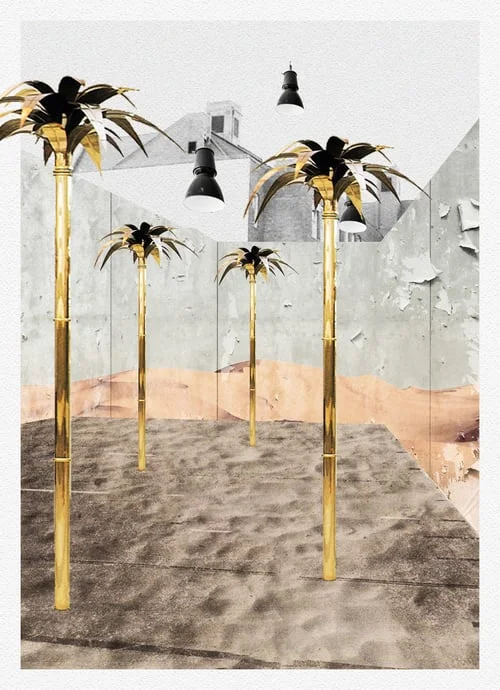Real Figments
Featured in MVT Journal (The Future Issue)
Winter 2016
With Kyle Branchesi
Are you dying for a rocky waterfall to complement your swimming pool? Does your resort get too warm in the summer months for skiing? Would your dining room feel incomplete without a palm tree desert scene? Then you should thank your lucky stars you’re in the thick of the anthropocene era, a glorious time when any natural phenomenon can not only be replicated for your personal pleasure, but can be made better than the original; bigger, faster, more sublime!
The turn of the world and your location in it are irrelevant when you honestly ask yourself what you want from nature and are willing to fork up the dough. The landscape of your dreams (really, any landscape!) can pop up wherever your heart desires; snowflakes can shoot out of a cannon anywhere in the world at any time and turn any inclined plane into the ideal snowy hill, while there is no rock formation in the world that can’t be recreated alongside your favorite water slide. And when the outdoors prove inhospitable, you can bring the party indoors, where you can have even more control over the fun! Eternal daylight is at the flip of a switch, inside or out.
Nature must have had a good time designing our environment, but you know the old saying: “if you want a job done right, you gotta do it yourself!” Because it tried its best but could never create a scene quite as majestic as that of Frederick Law Olmstead’s Central Park, a plot of land amalgamated from every picturesque forest scene that preceded it. And trees were never as replenishable as they are now in tree farms (and if they ever somehow run their course, there are perfectly suitable substitutions in laminates and formed stucco).
The things we scope out and make pilgrimages for in nature took millions of years to create, their processes delicate and imperceptible. What we see in them are only their outermost layer, the one that “performs” according to our human interests, and what we harvest from them is that one layer. When we replicate nature for our personal use, we design it backwards; reverse -engineering it so that whatever is visible or performs for us gets top priority, while everything beneath is mere armature. We respond to the surface of things, and so the surface of things is what we simulate as the original vanishes.



